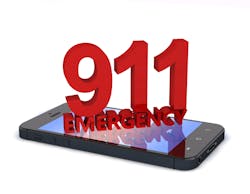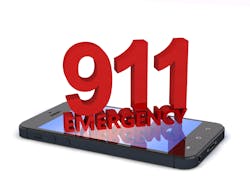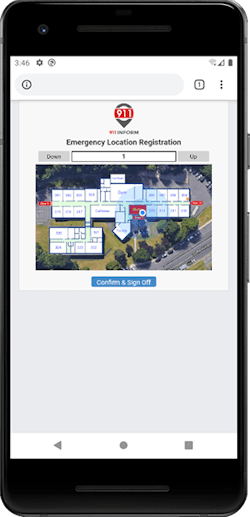The case for bridging first responders and organizational security gaps
In a survey of 273 public safety personnel, nearly all of them (94%) said the barrier to information access is a significant pain point in their work. They said there needs to be better information sharing across jurisdictions and real-time collaboration with other agencies needs improvement. As an industry, we need to be sensitive to the fact that public safety roles are more challenging than ever before, and we need to provide our nation’s first responders with the best possible information while they're on the job.
Situational Awareness Can Relieve Pressure from First Responders
In the United States, public safety is top of mind for everyone following any incident of gun violence. But as an industry, we have an opportunity to save lives every day. It’s about so much more than active shooters and weapons detection. Consider that each day there are 5,000 medical emergencies inside schools nationally. Now consider that the size of the average school is anywhere between 80,000 sq. feet to upwards of 250,000 sq. feet. If you’ve ever spoken to a police officer, EMT or firefighter about responding to a call for service at a school, they’ll tell you it’s something similar to searching for a needle in a haystack.It can be challenging to find the correct entrance, or maybe they need to go to the main office door to gain entry, then travel around the inside of the building to find the patient – and this is assuming that the correct location information was communicated in the initial emergency call. Meanwhile, many minutes are elapsing while the responders try to locate the patient. How do we address this issue? We must improve situational awareness by offering advanced location discovery solutions, interactive mapping and electronically controlled doors.
Situational awareness is critically important in school security, building security, enterprise, hospitals, malls, parks, hotels, stadiums and everywhere in between. There’s a lot we can do to improve situational awareness in emergencies by providing accurate and immediate data to everyone involved. This is even more important when there are multiple agencies and jurisdictions involved in emergency response and everyone is working with different information. By having an all-encompassing security solution that allows all jurisdictions to look at the situation through a single pane of glass, our first responders can handle the situation in the most efficient, direct way possible.
With interactive mapping, we can reduce the response time to an emergency by an average of six to 15 minutes. By utilizing location discovery solutions with landlines and cell phones, if a school administrator calls 911 to report a student experiencing a seizure and mistakenly provides the wrong building address – a well-equipped LDS and interactive building mapping is able to determine the correct location and send first responders to the student’s location without wasting precious time in sending paramedics to the wrong building.
Better Communications Helps Everyone Do More With Less
If you’ve spoken to police officers, EMTs, 911 operators or firefighters in the last few months, they will tell you that it seems like their job has gotten a lot harder in the past few years and that everyone feels overextended. They’ll tell you their departments are understaffed, underfunded and most emergency calls feel like loosely organized chaos. A big part of that is the need for improved communication and better information exchange. The harsh reality is that as the public’s sentiment around policing has shifted, in response there have been drastic budget cuts nationwide. As this concerning trend continues, individual institutions and organizations will become increasingly responsible for ensuring that accurate information about safety and security is available to first responders.
As I previously mentioned, we’ve reached a point in society where security is becoming progressively top of mind for most people. But when it comes to security solutions, we’re really only at the infancy of building security solutions. There are a variety of niche businesses entering the fray with one-off solutions. Some offer weapons detections, others offer facial recognition or just video pr mapping. All of these individual services mean that organizations will need to contract with multiple vendors to piecemeal together a security solution. By offering an all-encompassing security solution through a secure web portal, all involved emergency personnel can access the same information at the same time in an emergency event. This equates to faster load times and faster response times when every minute counts.
Where I live in Monmouth County, New Jersey, it takes our PSAP operators over 15 minutes to log onto the 34 different applications in order to do their job. That means when they’re on the phone with someone experiencing an emergency, they are going through each of those different 34 apps to cross-reference information in an effort to relay the most relevant data points to emergency responders in the field.
Obviously, first responders are doing the best they can with the technology they are expected to use, but by streamlining information into a single app that everyone from high school administrators to the 911 operator, to the fire chief all have access to – we can do a lot to bridge the gap between first responders and organizations. Remember, minutes matter – but seconds count.
Ivo Allen is a 30-plus-year veteran of the telecom industry. He is the CEO of 911inform, a public safety company providing mission-critical situational awareness to the existing 911 system. 911inform is the only notification and security management platform that bridges the gap between first responders and organizations. It enables full situational awareness and communication across multiple platforms allowing for transparency into any situation where a request for emergency services occurs, including both landline and wireless calls.
About the Author
Ivo Allen
Ivo Allen is a 30-plus year veteran of the telecom industry. He is the CEO of 911inform, a public safety company providing mission critical situational awareness to the existing 911 system. 911inform is the only notification and security management platform that bridges the gap between first responders and organizations. It enables full situational-awareness and communication across multiple platforms allowing for transparency into any situation where a request for emergency services occurs, to include both landline and wireless calls.





